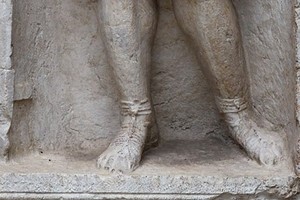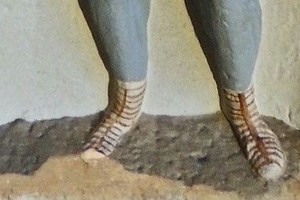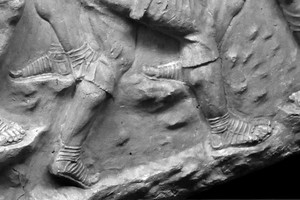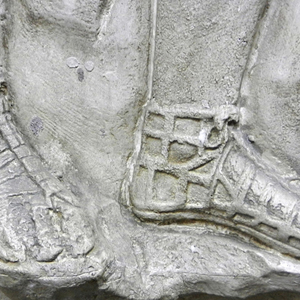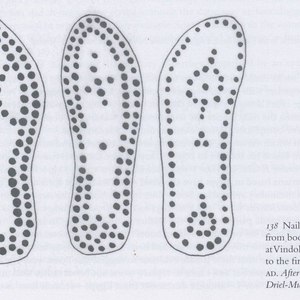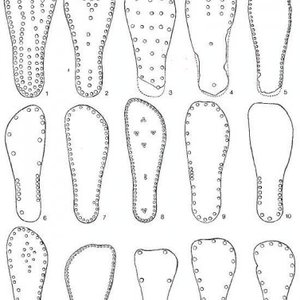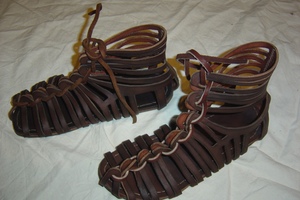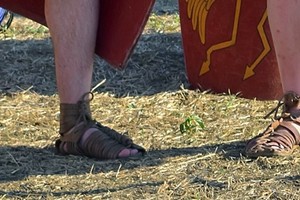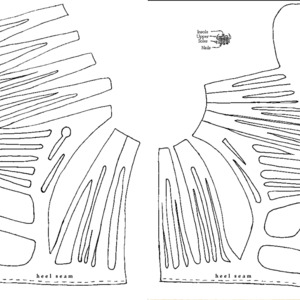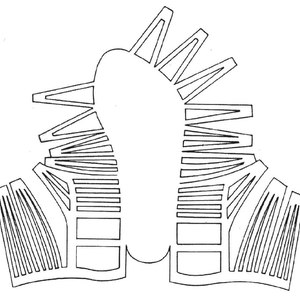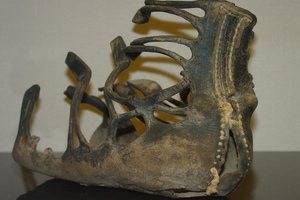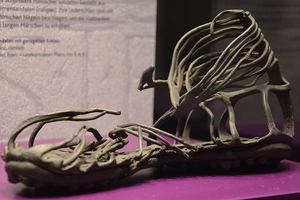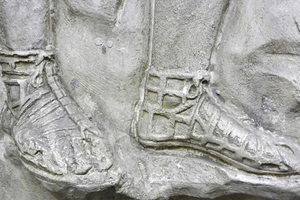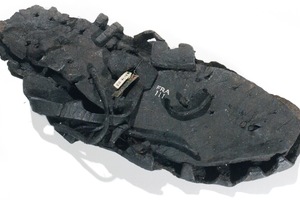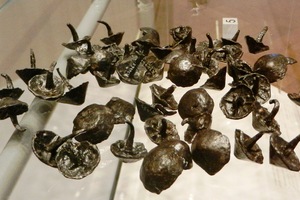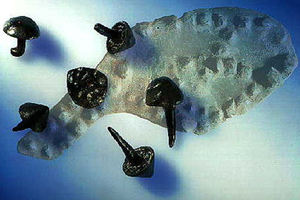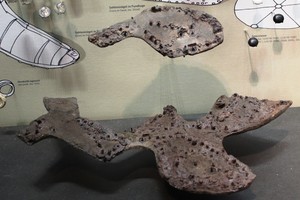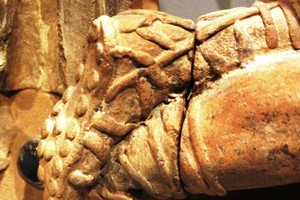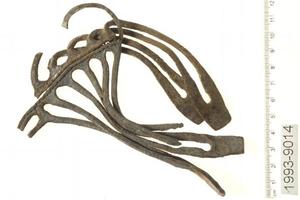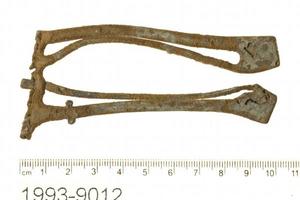Caligae
Caligae, also known as caligvae (Latin: călĭgae), were open Roman footwear. Caligae covered the foot from the sole to the shin and were mainly worn by Roman soldiers during the Republic and Principate periods. They were most commonly worn by legionaries, auxiliaries, and officers of lower and middle ranks. Caligae were particularly popular in the Eastern part of the Empire due to the warm and dry climate, where sandals were actively used by the civilian population for the same reason. In the northern provinces, a more popular closed-toe type of Roman footwear called calcei was prevalent.
Caligae were leather sandals with a thick sole. The upper part of the caligae consisted of interwoven leather straps that covered the ankle and foot. The straps were typically tied around the soldier's ankle, leaving the toes exposed. The thick sole of the caligae, adorned with small nails, provided comfort and prevented quick wear. The use of nailed soles was also common in calcei, where they served as both practical and decorative elements, forming aesthetic patterns on many findings. Thus, the construction of caligae ensured lightness, durability, and comfort during long marches, allowing the foot to breathe.
Archaeological discoveries have revealed instances where caligae were worn with socks or wraps, providing cushioning and warmth for the feet in cold weather.
In the 1st century CE, caligae were widespread throughout the entire Roman Empire, becoming a symbol of the soldier's profession. However, starting from the 2nd century CE and into the early 3rd century CE, they gradually disappeared in the northern regions of the Empire, likely being replaced by warmer calcei. This shift can be attributed to various factors, including climate change, the practicality of closed-toe footwear, fashion trends, and other less significant factors.
Archaeologist Carol van Driel-Murray considers caligae to be ideal footwear for marching as they provide protection for the foot and ankle while having cutouts in sensitive areas to prevent skin irritation and promote cooling in hot weather.
According to Suetonius, Gaius Julius Caesar Augustus Germanicus, better known as Caligula, earned his nickname because he frequently dressed in the attire of a legionary as a child (Latin: Caligula, a term of endearment derived from caliga, meaning "soldier's boot").
Reenactment
Caligae are necessary for reconstructing the appearance of Roman army representatives: legionaries, auxiliaries, optios, centurions, and various types of standard bearers. After the 1st and 2nd centuries CE (the main reconstruction period of our club), calcei replaced caligae in the Roman army.
The most common examples for reconstruction are the caligae from Mainz and the caligae from the British Museum. When selecting historical footwear, it is important to remember that it must strictly correspond to the owner's foot size and its individual characteristics. Otherwise, significant discomfort will arise when wearing them, and covering long distances during marches will be nearly impossible. Proper leather treatment and reliable stitching are also essential elements as they directly influence the durability of the footwear. To reduce sole wear during marches, it is recommended to add small nails, while for combat in modern indoor environments, a pair of caligae without nails is recommended to prevent slipping on even surfaces.
Caligae are part of the minimal set of clothing that is recommended for beginner reenactors to gather. With the necessary skill and materials, they can be crafted independently. For such cases, examples of caligae patterns are provided below. Special attention should be paid to the sole thickness and the nails' attachment to avoid sharp ends protruding into the interior.
Related topics
Calcei, Sandals, Legionnaire, Auxiliaries, Legion, Centurion
Literature
- Goldman, N., in Sebesta, Judith Lynn, and Bonfante, Larissa, editors, The World of Roman Costume: Wisconsin Studies in Classics, The University of Wisconsin Press, 1994
- Gaius Suetonius Tranquillus. The life of the Twelve Caesars. Moscow. Nauka Publishing House, 1993. Translated by M. L. Gasparov.

 Gallery
Gallery






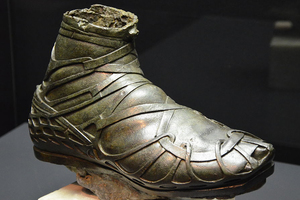 Bronze caliga of an unopened statue of a Roman cavalryman, I-II centuries AD, Kalkriese Museum, Germany
Bronze caliga of an unopened statue of a Roman cavalryman, I-II centuries AD, Kalkriese Museum, Germany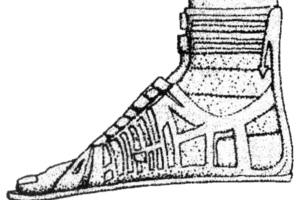 Illustration from the book: Bishop M. C., Coulston J. C. N. Roman Military Equipment. Second edition. 2006: Oxbow Books.
Illustration from the book: Bishop M. C., Coulston J. C. N. Roman Military Equipment. Second edition. 2006: Oxbow Books.